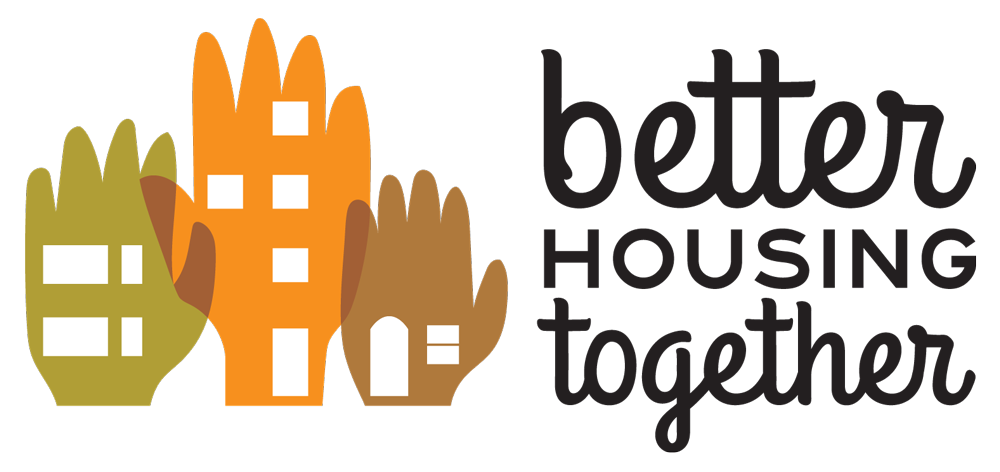middle housing CASE STUDY: COTTAGES ON 32ND
Meet the Cottages on 32nd: six thoughtfully designed homes built on a single South Eugene lot—delivering much-needed, walkable, right-sized middle housing without displacing existing residents or requiring new infrastructure.
Designed and developed by Tyler Runner, this project demonstrates what’s possible when we rethink how our neighborhoods evolve to meet community needs. As one of the first developments built under Eugene’s Middle Housing Code, it shows how early neighbor conversations, a people-first site plan, and durable, low-carbon materials can bring new homes into established neighborhoods while strengthening the character of the block.
With vacancy rates at historic lows and costs continuing to rise across Lane County, small-scale, human-centered projects like this are a critical part of the solution. The Cottages on 32nd proves that good design—paired with the right zoning tools—can add housing where it’s needed most: close to schools, groceries, parks, and transit. These are right-sized homes that support daily life, expand choices for working families, and make the most of our existing infrastructure.
This case study—prepared by board member Brooke Standifer of Wild Rising LLC for Better Housing Together—captures the process, challenges, and big-picture impact of one of Eugene’s early middle-housing projects, offering lessons and inspiration for what comes next in communities across Lane County.
2022 WHITE PAPER - UO ENVIRONMENTAL & NATURAL RESOURCES LAW CENTER
In April 2022, the Sustainable Land Use Project of the University of Oregon Environmental and Natural Resources Law Center published this white paper on “Middle Housing Misconceptions.” The paper and summary address misinformation and five misconceptions about middle housing. It also includes the Sustainable Land Use Project’s evaluation of the Eugene Planning Commission Recommendations.
middle housing helps: new Summary of eugene’s process & recommendations
This infographic was created in 2022 to help people join the conversation and understand Eugene’s process to create a Middle Housing Recommendation. Like eight of Oregon’s other largest cities, Eugene used public involvement and technical analysis to design a custom Middle Housing Code that goes beyond the state’s minimum standards. Eugene’s Middle Housing Recommendation includes incentives that support Affordable Housing, small housing, and transit-oriented housing—actions that align with the City’s long-range, housing production, and climate-action planning and that are not present in the state’s minimum standards. The public input process also established a new model for representative community engagement with a demographically representative, lottery-selected review panel of 29 community members guiding the project principles and vetting draft code concepts and final proposals.
COMMUNITY SUPPORT FOR MIDDLE HOUSING - 2021 survey & POLLING
In February 2021, we worked with local partners to poll 500 metro-area voters about housing—and the response was overwhelming. More than 3/4 of renters and homeowners agreed the cost of housing was far too high, and 80% of locals support Oregon’s new "middle housing” law that re-legalizes traditional housing options. Housing is the 2nd-most important quality of life concern for people, and respondents were clear that zoning needs to change if older, younger, working, and lower-income families are going to have a path to housing stability. Consistent with other data points and research, half of all households said they are strained by their monthly housing costs. Data from Oregon Housing & Community Services and The United Way confirm these same percentages.
HOUSING DISCRIMINATION + GENERATIONAL IMPACTS - 2021
Understanding both historic and contemporary experiences of housing discrimination is important when a community wants to plan for an inclusive future. In 2021, we developed an infographic tracing Oregon’s history of restrictive and exclusionary housing laws—from the state’s founding on racially exclusionary laws to contemporary experiences of exclusion based on income and tenure. The outcome of such measurable and generational discrimination is significantly lower homeownership rates and wealth among BIPOC neighbors. Black homeownership in Lane County is now just 28%, and BIPOC households typically hold 1/10th the wealth of white households. First among national thought-leaders’ recommendations to support racially just housing policy are ending exclusionary zoning (with laws like to HB 2001) and expanding the local supply of affordable housing options in all areas.
A HOUSING CRISiS IN LANE COUNTY - 2018 COMMUNITY SNAPSHOT
In 2018, the breadth and depth of Lane County’s housing crisis was not well-understood. To chart a path forward, it was important to have a shared understanding of local housing cost-burden, housing availability, and household income based on reputable sources. We knew that Eugene was the 2nd-most constrained housing market in the nation (second only to Seattle, WA), and that the United Way’s ALICE Report clearly illuminated the extent of our challenge (with 42% of the community in poverty or struggling to make ends meet).
VIDEO: INTRODUCING “MISSING MIDDLE HOUSING” - 2021
In just 2 minutes, this short video introduces "Missing Middle Housing" and explains why these housing options play an important role in supporting families and creating affordable, equitable, sustainable neighborhoods. Oregon re-legalized these traditional housing types in cities statewide in 2019. Why do we need Missing Middle Housing? Start here!
VIDEO: LANE COUNTY’S HOUSING CRISIS - 2018
This short video introduces the context of Lane County's housing crisis. Better Housing Together first shared this video at our 2018 Community Forum & Housing Exhibit—the public launch of our collective impact project, which was attended by nearly 300 people (the max that could fit safely in the room). At this event, we collected 2,200 data points and action items that have directly informed our advocacy and outreach efforts in the years since, including: advocacy and advising on Oregon's landmark middle housing law (HB 2001), creation of Eugene's first Affordable Housing Trust Fund, creation of Lane County's first Affordable Housing Action Plan, leading efforts to guide Eugene’s now-nationally progressive ADU policy, and numerous projects to rework or eliminate unnecessary costs and delays in the housing production process. The approach we take to this work is multi-sector and multi-disciplinary; our community and the complexity of the housing crisis demand it.










